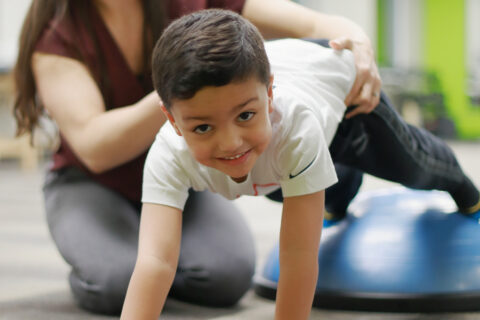Nourishing Your Childs Vision
May is vision health month in Canada! Talking steps to improve eye health, especially when eyes are growing and developing, is key to maintaining good vision for years to come! There are many things we can do as parents to, not only protect our child’s vision, but also optimize their eye health as they grow. As a dietitian mom, it’s important to me to do what I can to nourish my kids and their bodies.
In honour of vision health month, I have come up with some simple ideas that will help you incorporate delicious foods packed full of essential vision-boosting nutrients!
First up, here’s a table that walks you through some vision-supporting nutrients, where they can be found, and ideas of how to incorporate them into your little one’s day.
Nutrients that Nourish Your Childs Eyes
| Vision Health Nutrient | Role in Eye Health | Food Sources | Meal/Snack Idea |
| Antioxidants lutein & zeaxanthin | Protect the eyes against free radical damage. They help absorb extra light energy and reduce risk of chronic eye diseases such as cataracts. | Dark green vegetables
(Kale, spinach, broccoli) Kiwi, grapes, honey dew melon, red bell peppers, squash |
Spinach side salad with chopped bell pepper, grapes, and broccoli with a sweet poppy seed dressing |
| Vitamin C | Acts as an antioxidant to protect eye health and is important for the formation of a healthy cornea. Vitamin C helps to reduce risk of cataracts and age-related macular degeneration. | Red bell peppers, cauliflower, kiwi, strawberries, oranges, grapefruit, broccoli, guava, papaya, tomatoes | Tropical fruit smoothie with frozen strawberries, orange juice, and banana
Beef, broccoli and bell pepper stir-fry served over rice |
| Vitamin E | Protects eye retina cells from free radical damage, and may help to slow progression of age-related macular degeneration. | Wheat germ, almonds, sunflower seeds, avocado, peanut butter | Peanut butter energy balls made with almond flour, oats, maple syrup, and sunflower seeds for crunch! |
| Omega 3 fats | Important for development of the vision and eye function. Protects eyes from oxidative damage, improves tear production and maintains oil layer on the eye for optimal hydration. | Salmon, mackerel, oysters, sardines, flaxseeds, chia seeds, walnuts | Oven roasted salmon with roasted baby potatoes and asparagus
Oatmeal sprinkled with chia seeds, sliced banana, chopped walnuts, served with vanilla Greek yogurt mixed in. |
| Zinc | This mineral helps vitamin a produce a pigment called melanin which helps protect the eye. Zinc deficiency may result in poor night vision and higher risk of cataracts. | Beef, pork, oysters, crab, shrimp, chickpeas, beans, lentils, hemp seeds, pumpkin seeds | Chickpea curry sprinkled with toasted pumpkins seeds served over rice
Beef and pork Italian meatballs in tomato sauce served over spaghetti |
Even though it may be interesting to learn about how certain foods and nutrients contribute to eye health, going out of your way to teach your kids about eye health nutrition (or nutrition in general) isn’t actually necessary (or beneficial) and can even backfire. See, if we’re teaching our kids about the importance of eating carrots, spinach and pumpkin seeds to “boost their seeing power” or “give them super sharp eyes” with the intention of getting them to eat these foods, this will come off as pressure. When kids feel any kind of pressure (direct or sneaky), this often turns them off and deters them from eating those foods. What we want to do instead, is provide a positive and neutral eating environment where kids feel free to explore the foods that you’ve served on their own.
Now, it is still important for kids to explore food and nurture curiosity. One way you can do this, without adding extra pressure, is to highlight the different colors on their plate. Ask your child “what food has the brightest color?” You could also make comments about the different textures of food. For example, taking a big bite out of a crunchy piece of cucumber and say “can you hear the big sound this makes when I bite it?” or “this cheese is kind of squeaky when I take a bite!”
By encouraging exploration of the different physical qualities of foods like textures and colors can help kids to become more engaged at meal times, without over-complicating things or adding pressure.
More tips for Healthy Vision
Nutrition is only one piece of the puzzle when it comes to supporting optimal visual development and health. Here are a few more suggestions that you may consider adding into your family’s routine to help protect and support your child’s vision health.
- Schedule a yearly eye exam- with regular check ups your optometrist will be able to track your child’s eye development at every stage. If any concerning changes in vision or eye health occur, it will be more easily recognized and quickly treated!
- Set goals around screen time- More screen time has been linked to higher rates of vision problems in children. One way to help reduce your child’s risk is to encourage regular breaks from watching screens so that their eyes get a chance to rest. For example, every 20-30 minutes you could encourage a leg stretch break before returning to the screen. Or if you are uncomfortable with the amount of time your child spends in front of screens it could be worth setting a goal around reducing total screen time in the day.
- Use protective eye wear- The majority of eye injuries can be prevented through wearing protective eye wear. If your child is regularly taking part in a variety of sports or activities, take a look at these suggested types of protective eye wear they may benefit from wearing (including goggles, sunglasses and more!).
- Get outside more often- Going outside actually helps give your child’s eyes a chance to relax as they focus on further distance objects in their field of vision. Since the majority of their day is usually spent indoors doing near-vision activities, scheduling some outdoor time can help to combat this type of eye strain and fatigue!
There is a variety of lifestyle changes or additions to choose from when it comes to supporting and nourishing your children’s visual health and development. Take the ideas that you think might fit best for your family, and pat yourself on the back for being proactive in optimizing your kiddos eye health today and for the years to come!
References:


